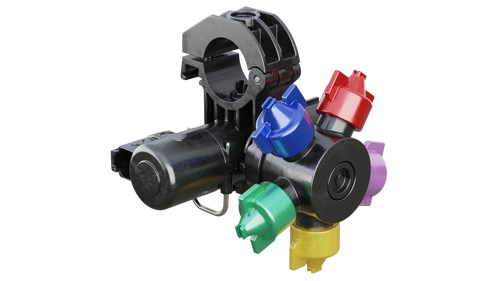
Key Points
- Herbicide types and applications
Herbicides are generally classified as contact, systemic, or soil residual. - Importance of adjuvants in chemical programs
Adjuvants, such as oils, surfactants, and drift retardants, play a critical role in enhancing herbicide performance. - Mode of Action (MOA) diversity for comprehensive control
When you create an herbicide program, it’s important to have a mix of MOAs, how an herbicide affects a plant at the tissue or cellular level, to ensure complete weed kill and control.
How to choose the correct herbicide
Choosing the correct herbicide for weed control depends on the type of weeds, their growth stage, and the coverage required. And don’t forget timing and ability to spray, whether you are the sprayer operator or you hire a custom applicator. Here’s a quick guide:
1. For an immediate effect on visible weeds
Use contact herbicides if you need to kill only the parts of weeds that you can spray directly. For effective use, complete coverage of the plant is essential because only the exposed areas will be affected. This type of herbicide is best suited for targeted applications where thorough coverage is possible.
2. For full weed control including roots
Select systemic herbicides if you want the herbicide to move through the plant, targeting the entire weed from the inside out, including roots and other parts not directly sprayed. Because of internal distribution, complete coverage is less critical than with contact herbicides. These are useful for more established plants.
3. For prevention of new weeds
Choose soil residual herbicides if your goal is to prevent new weeds from germinating after the initial application. Soil residuals provide extended control by killing or inhibiting small, emerging weeds. However, they are ineffective on weeds that have already matured.
4. Effectiveness and application frequency
Consider adding adjuvants to increase the effectiveness of your herbicide. These additives, like surfactants and drift retardants, improve coverage, reduce waste, and enhance the herbicide’s overall performance. While they don’t kill weeds on their own, they can significantly increase the effectiveness of herbicides, often determining the success of a chemical program. Always read the label and consider consulting your chemical representative to know what adjuvants are right for your application.
Each herbicide type has a unique Mode of Action (MOA), the mechanism by which it affects plant tissues or cells. Using multiple MOAs in a weed control program helps avoid resistance, as some weeds may tolerate a single MOA.
More MOAs and additional adjuvants may improve results but also increase costs. Decide how often you can apply herbicides and balance effectiveness with cost to create your ideal herbicide program.
Disclaimer: Always read and follow label instructions and consult your chemical representative if you have questions.





